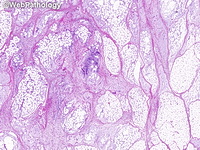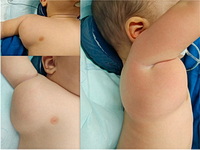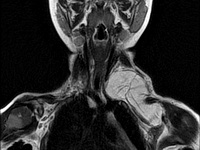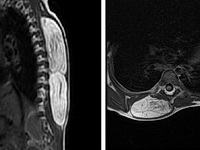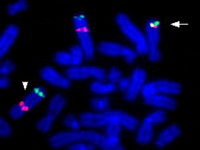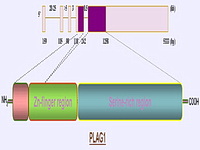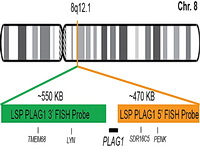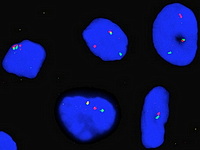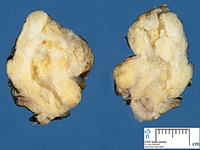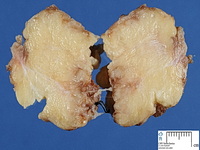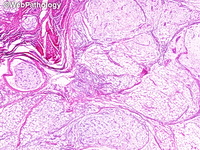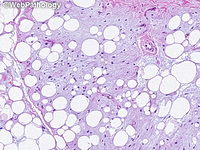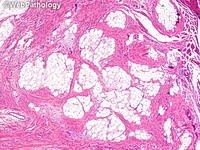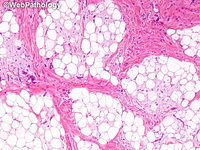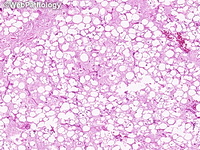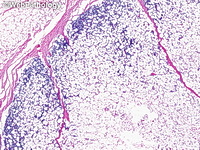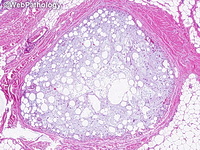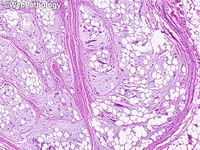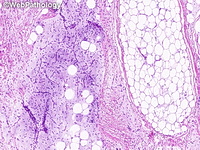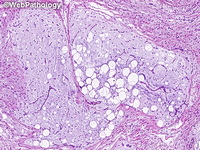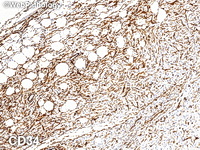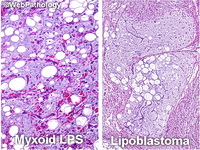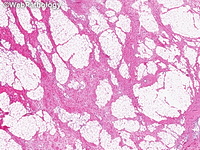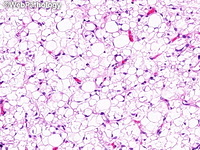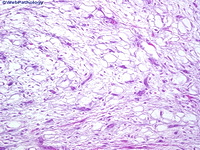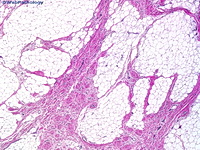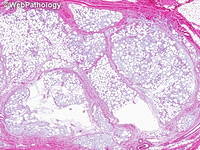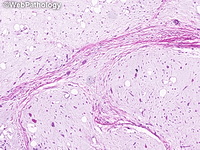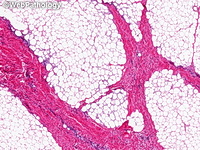Jun 2023
Lipoblastoma
Reviewer(s): Dharam Ramnani, MD | Last Update: 6/12/2023
Lipoblastoma is a benign lipomatous tumor seen in infants and children. It may be superficial and circumscribed (lipoblastoma) or deep-seated and infiltrative (lipoblastomatosis). It involves proximal portions of upper and lower extremities, trunk, and head and neck region. It has been reported in many sites and internal organs.Superficial lesions present as a slow-growing, painless, circumscribed, subcutaneous mass measuring 1 to 15 cm. Deep-seated tumors (lipoblastomatosis) are ill-defined, often quite large and may compress vital structures. The cut surface shows tan-white fibrous trabeculae coursing through lobulated, pale yellow adipose tissue. Microscopically, it shows adipocytes in various stages of maturation, from primitive stellate or spindle cells (preadipocytes) to multivacuolated lipoblasts to mature adipocytes. There is myxoid stroma with plexiform vascular network and mast cells.Lipoblastomas harbor rearrangements of 8q11-q13 region resulting in the fusion of proto-oncogene PLAG1 with one of > 20 partner genes (COL3A1, COL1A2, RAD51B, FAB2A, BOC and many others). Some cases show extra copies of chromosome 8 with or without 8q11-13 rearrangements.The differential diagnosis includes lipoma, fibrolipoma, myxoid liposarcoma and infantile fibromatosis. The treatment is wide local excision. Recurrences occur in 15%-45% of cases, usually in diffuse lipoblastomatosis. The prognosis is excellent. It has no malignant potential or risk of metastasis.


